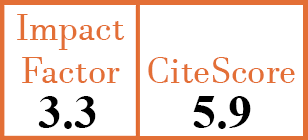Paediatric Rheumatology
Comparative usefulness of C-reactive protein and erythrocyte sedimentation rate in juvenile rheumatoid arthritis
J.-F. Wu, Y.-H. Yang, L.-C. Wang, J.-H. Lee, E.-Y. Shen, B.-L. Chiang
CER3153
2007 Vol.25, N°5
PI 0782, PF 0785
Paediatric Rheumatology
Free to view
(click on article PDF icon to read the article)
PMID: 18078633 [PubMed]
Abstract
OBJECTIVES:
To compare serial C-reactive protein (CRP) and erythrocyte sedimentation rate (ESR) levels in juvenile rheumatoid arthritis (JRA) patients and investigate their application as diagnostic parameters and prognostic predictive factors.
METHODS:
We carried out retrospective chart review among JRA patients who were followed-up at the National Taiwan University Hospital (NTUH) between 1994 and 2005.
RESULTS:
Thirty-nine girls and 68 boys were included in this study. At the time of diagnosis, the prevalence of ESR was significantly greater than that of CRP (86.8% vs. 47.2%, p < 0.05). ESR revealed more responsiveness to treatment compared to CRP (SRMs were -0.69 and -0.31, respectively). At the time of diagnosis, high CRP levels (≥ 5mg/dL) correlated with poor therapeutic response, as do positive CRP (> 0.8 mg/dL) and high ESR levels (> 40 mm/h) after treatment for six months. Overall, initial high CRP levels (≥ 5mg/dL) demonstrated the strongest predictive role of failure of the first remission.
CONCLUSIONS:
For disease diagnosis, ESR can be a better parameter than CRP but a high initial CRP level can strongly predict treatment failure of the first remission.


